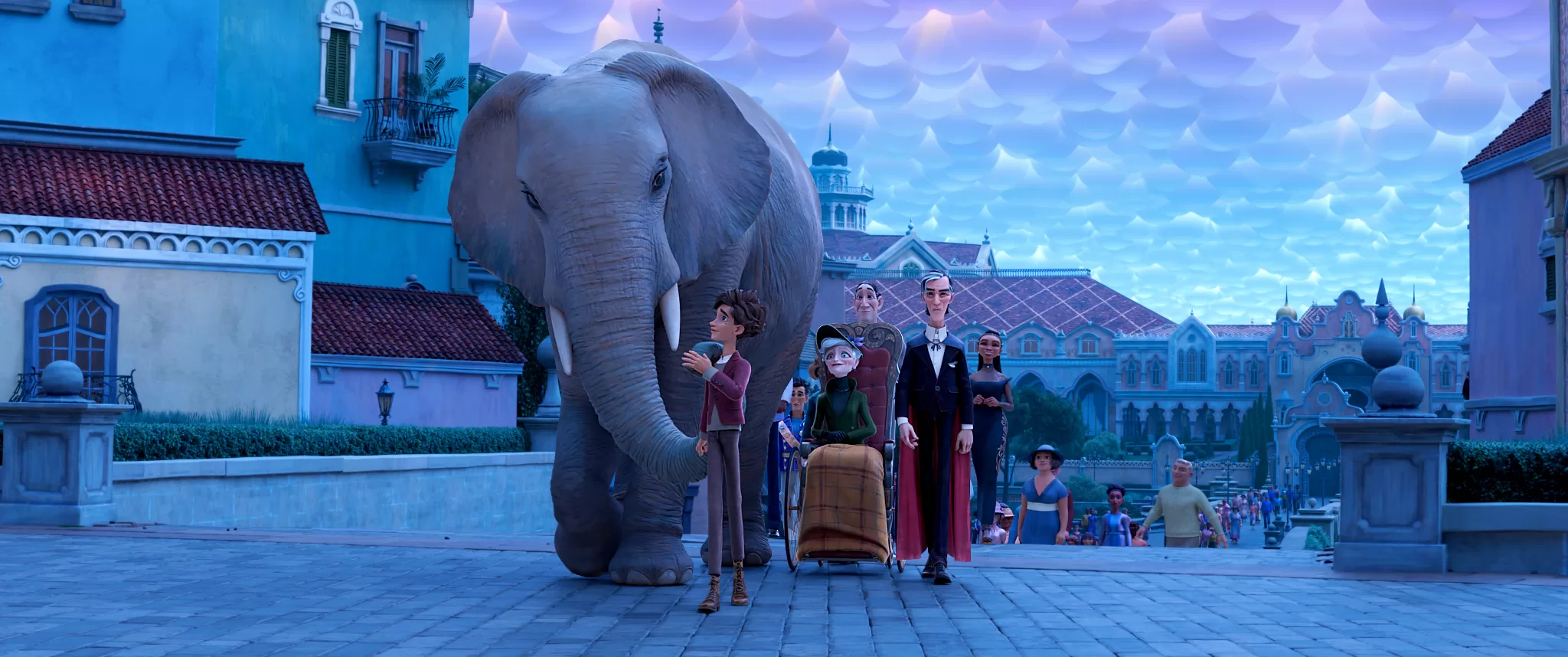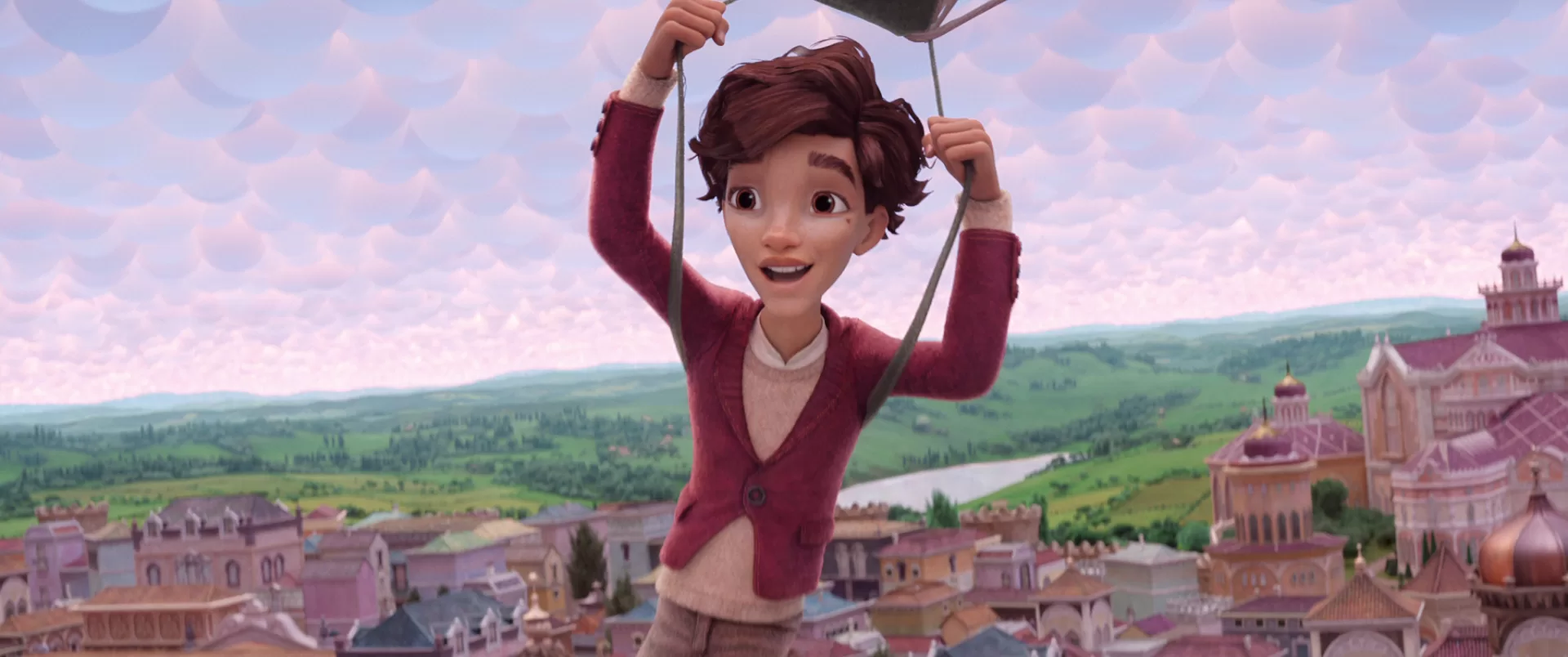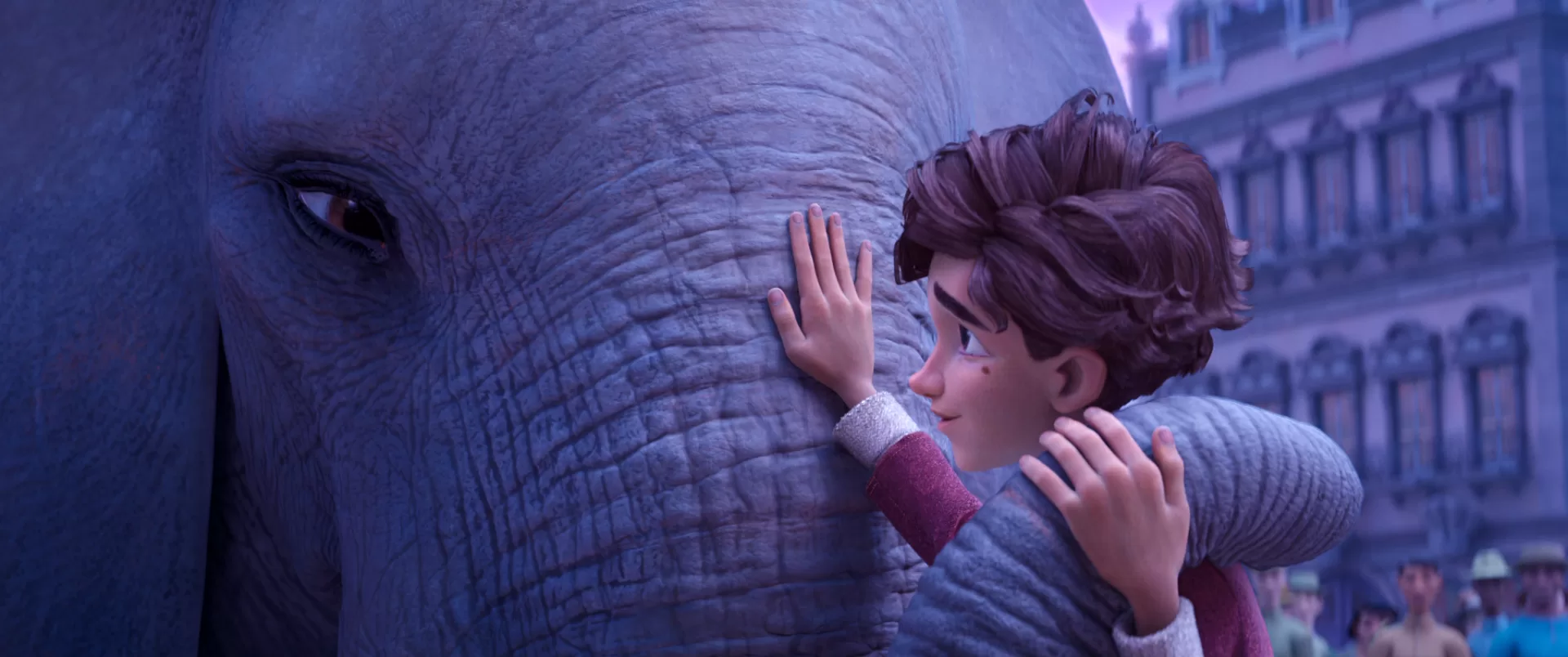How do you make the impossible become possible? Why, believe in it, of course! It’s an age-old theme, brought to life countless times in children’s stories (and many for adults as well), for a simple reason: It’s what we need to hear.
Netflix’s animated children’s movie The Magician’s Elephant introduces us to the fantastical world of Baltese, a vaguely Southern European land that’s part of a larger kingdom. It’s a kaleidoscope of a world, with brilliant color and whimsical designs that only animation can truly bring to life. But then an undefined war strikes, and a literal cloud descends.
The story begins in the shadow of a years-old tragedy that has traumatized the population, with the perpetually overcast sky and loss of magic standing in for the kind of pessimism and mistrust that often takes hold in the wake of a national tragedy (not unlike what we’re living through now, as the entire world experiences a form of long COVID). The adults see only the worst of the world after what they experienced, but of course, the children perceive things differently.

Peter, a war orphan raised by the grizzled soldier who saved him after his home was destroyed, holds out hope for a brighter future despite his guardian’s stormy attitude. Despite the guardian’s insistence that his infant sister died during her birth along with his mother, he believes she’s still out there somewhere, though when a fortune teller (who also narrates the film) informs him that the way to find her is to “follow the elephant,” he’s left thoroughly confused.
The elephant soon shows up when a stage magician’s performance goes awry, dropping through the ceiling and onto a wealthy old lady. The King, who loves entertainment above all else and gives off kooky-Silicon-Valley-move-fast-break-things vibes, travels to Baltese to see this wonder. Peter tries to argue for the elephant’s release, so she can lead him to his sister, and the King assigns him: Accomplish three impossible things, and the elephant will be his. What things? Well, the King doesn’t know himself—he’s a spur-of-the-moment kind of guy.
It’s a simple yet charming tale, the kind to share with young children to help them believe in their own potential. The gorgeously designed setting—full of grinningly colorful houses, shimmering mosaics, and textured detail—and surreal dream sequences make the film feel like a storybook come to life. While some of the movement animations are a bit stiff, the characters’ expressions and voices nevertheless make them come alive.

We spend our lives being told “no, you can’t do that,” and often with good reason. Risk-taking is valorized in the popular imagination, but it’s a risk for a reason: You can lose something, get hurt, or worse. With a devastating war in recent memory, the adults in Peter’s world are understandably reluctant to be anything but cautious, lest they get hurt again. The few willing to believe in something “impossible” come off as hopelessly privileged (the King) or frustratingly foolish. Yet Peter is nevertheless determined to accomplish what no one else thinks he can, refusing to let the naysayers get to him.
All this makes him a likable, if rather bland, children’s book hero, the kind many kids below a certain age can imagine themselves as. One of the story’s strengths is that there’s no overt villain; the King isn’t so much standing between Peter and his goal as challenging him. One could say the story’s main antagonist is doubt.

Sometimes, stories don’t need to be too complicated to get their message across, and The Magician’s Elephant, based on the novel by Kate DiCamillo, fulfills its goal with gentle whimsy and a touch of wit. A colorful and heart-warming tale full of stunning visuals, the film reminds its audience that to get out of a rut, one must believe, and that true magic begins by leaving behind doubt and embracing the possible.
Score – 4/5 Stars
